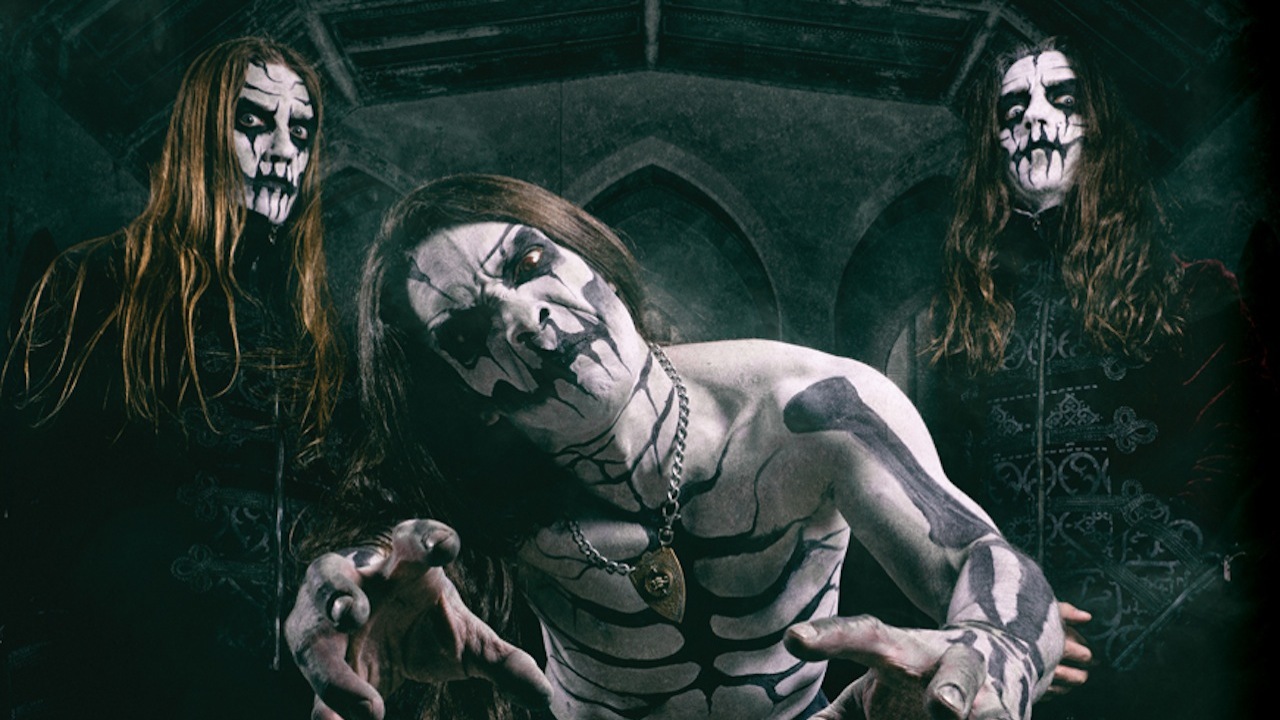Carach Angren: Grimm Tales
Symphonic storytellers Carach Angren have long stood out from the black metal pack. However, this time around it's resulted in death threats.

Given the nature of the beast, it’s not surprising that every so often a black metal album causes a wave of controversy upon its release. But to outrage folks months before your album has been launched… that takes some doing. Such is the achievement/predicament, however, of rising symphonic stars Carach Angren, the Dutch trio kickstarting no small amount of furore after offering a preview of their latest opus, This Is No Fairytale, in the shape of a lyric video for the album’s opening number, There’s No Place Like Home.
Though reaction was mainly positive, amongst the enthused fans were listeners so horrified that they not only wrote to complain to the band’s label, Season Of Mist, but in at least one case issued death threats.
“This isn’t a lyrical context for black metal,” was the explanation in one email, reminding older black metal fans of the 90s when such activity was more common and labels received threats for signing ‘non-approved’ outfits such as Fleurety. But what sort of content could invoke such ire in today’s more rational scene?/o:p
Well, some brutal subject matter actually, the song’s narrative focusing on the story of a physically and sexually abusive husband and father. It’s close-to-the-knuckle stuff, and though the complaints seem a little daft, it’s easy to see why the song raised eyebrows. This isn’t typical lyrical content for a BM song, and is all the more surprising given the more fantastic and historical themes the band have explored in the past.
Indeed, it’s obvious that genre boundaries are of no interest to the group, lyrically or musically. And to be fair, Carach Angren are not a typical BM band – just as apt a label would be the ‘extreme symphonic metal’ tag that has become attached to Cradle Of Filth and Dimmu Borgir, not to mention the more death metal-orientated Septicflesh and Fleshgod Apocalypse, who in many ways the band sit closer to. That said, the band’s music does retain a lot of the BM aesthetic – after all, that corpse-paint is pretty unambiguous – so do the group themselves still feel aligned with that genre?
“I think we evolved a bit from that,” considers Ardek. “We still have elements but for me I always made a separation between the cultural movement of BM and the musical genre – and [the latter] evolved. It’s not the 80s or 90s anymore and we have never been a band like that; we always had melodic elements and different styles. We tried to find our own path, so to say we are a pure black metal band, no I wouldn’t say that is the case.”
While Carach Angren’s music definitely deviates from the emotional palette associated with black metal, it is nonetheless their lyrical approach that distinguishes them from other bands in the genre, and for that matter, most bands in the metal scene. Literally written as horror fiction, the words convey scenes and dialogue just as one would in a piece of literature, leading to obvious comparisons with Danish horror metal legend King Diamond.
Sign up below to get the latest from Metal Hammer, plus exclusive special offers, direct to your inbox!
“It’s funny because it was only a couple of years ago I found out about the storytelling aspect of King Diamond,” replies Ardek. “In the early days we wanted to do a demo and already had some folklore stories about ghosts. We went online to find a cool ghost story and made the whole demo about that. It worked so well so we did this with each release and this became a guide, it’s like, of course we’re going to do a story; now we probably wouldn’t know how to do an individual song about something.”
Like King Diamond, Carach Angren’s tales are perceived by many to have removed them from the BM sphere due to their lack of focus on ‘real’ occultism or folklore. Yet spirits and ghost ships aren’t so far removed from trolls and demons. The fact that Norwegian pioneers such as Ulver or Gorgoroth seem so contextually different perhaps has something to do with the exoticism of their culture and the authenticity we place upon traditional stories about fictional beings as opposed to contemporary fantasy literature featuring fictional beings.
“I think the main difference is that those bands were merely wanting to create an atmosphere,” Ardek ponders. “What we do is tell stories. When we pick topics we dive into them and the emotions we want to translate through the music, but also we literally tell what is happening. Sometimes this is controversial because the lyrics are not as deep as some people want; they are literally telling you what is happening.”
To that end, the latest album sees the characters making their way through an imaginative, harrowing story that blends the horror of abuse and suicide with supernatural elements. To a large degree this thematic emphasis necessitates that the songs’ direction be dictated by the needs of the story and this, married with the heavily orchestration, means that the group have had to become self-reliant in terms of inspiration. In fact, much of the group’s uniqueness may be due to the fact that they have reached a point where there is very little point of reference.
“We have quite a special way of composing music,” Ardek explains. “I begin with the symphonic parts then add the percussion and then the guitars come from that. So some of the riffs you hear actually started out as orchestral parts. And because the orchestral parts influence the music more, the structure has also changed a lot.
“To be honest, we don’t listen that much to other bands anymore – we are working and touring quite a lot and have to write a lot so we are not really concert visitors and don’t buy a lot of records anymore. It’s very clichéd thing to say, but first of all we have to like it ourselves and so we try to evolve naturally rather than sticking to that part of the audience that is conventional and demands the same thing.”
THIS IS NO FAIRYTALE IS RELEASED ON FEBRUARY 23 VIA SEASON OF MIST/o:p
